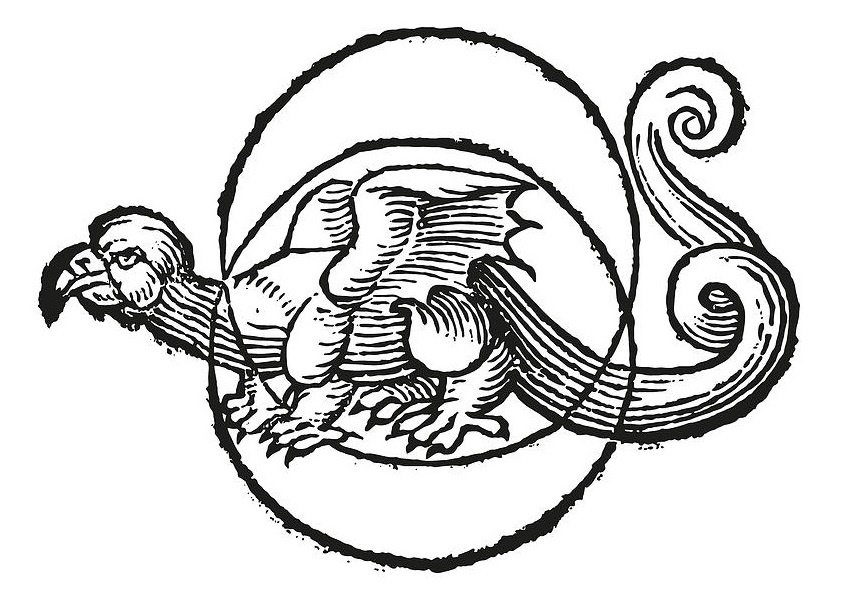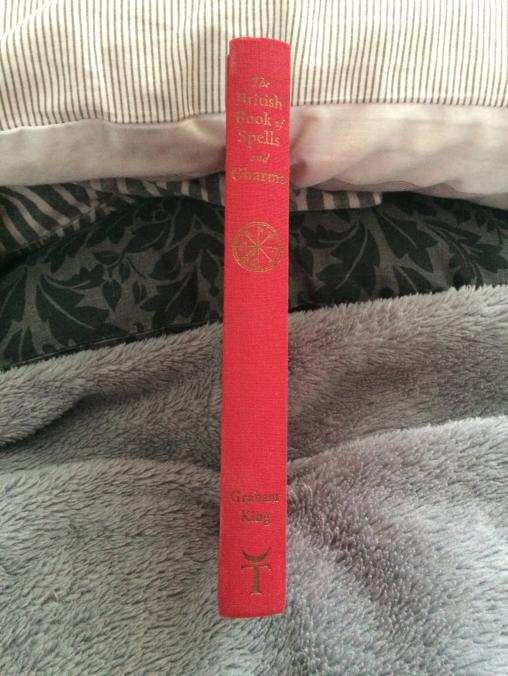Jinn Sorcery, a volume by Rain Al-Alim published by Scarlet Imprint, is a fascinating text, offering insights into the practice of Arabic ritual magic as it pertains jinn spirits. Don’t let its size fool you; even though it is a short book under 100 pages, virtually all of its contents are dedicated to experiments and practical material, from the conjuration and dream incubation to exorcism and scrying.
The binding of the standard edition is quite pretty; a regal gold certainly suits the aesthetics of the text. One major problem, however, is that the black hexagram on the front of my copy has slowly begun to flake away into gold. If you tend to be a little rougher with your books, I would advise you to be a bit more careful with this one, just to better preserve the quality of the cover.
Al-Alim opens the text by providing some insights into the traditions of Arabic jinn magic, charting various cultural attitudes towards the jinn, notions of their tribal belongings, their abilities and manifestations, typologies, methods of conjuration, and more. The entire preface is absolutely fascinating, both on its own as an introduction to a vital practice, as well as in its similarities and differences to the Western grimoires and traditions of ritual magic I am more familiar with. Al-Alim’s exploration of the various ways in which jinn are conceived was especially intriguing, especially in his consideration of hierarchy. The ways in which spirits organize themselves, whom they are loyal and subject to, and in whose name each can be called to answer by has always been something I’ve been deeply interested, especially as I continue to conjure and make pacts with various spirits myself.
Jinn are ranked by their magical strength and standing within their own society, with greater jinn being highly intelligent and extremely dangerous while lesser ones are more akin to mischief-makers. The social organization of the jinn community resembles that of a royal court, in which most of the jinn are offspring of the seven jinn kings, categorized as archdemons and leaders of the infernal hosts. These rulers are traditionally associated with the seven planets, with a colour and a day of the week attributed to each of them. They have many subjects and advisers drawn from the tribes under their rulership. The old Arabic grimoires refer to them as the seven terrestrial kings (mulūk al-arḍīya). They are governed in turn by the seven angels of the days.
Rain Al-Alim, Jinn Sorcery, xiv.
The first proper chapter covers dream incubation rituals, designed to facilitate contact between the magician and the spirits while asleep (the Invocation of Neli immediately comes to mind, along with the various experiments in the PGM). The various approaches used typically involve creating and burning a specific incense blend, reciting conjurations, numerous reputations of Voces Magicae, and other accompanying actions such as inscribing symbols and words on one’s hand and sleeping on paper talismans.
The next section covers the Al-Mandal (which is itself related to the Almadel) and scrying methods. Many of the techniques present can be found in the Solomonic tradition, such as the employment of mirrors, fingernails, and oil for scrying, the presence of an assistant child seer, and of course fasting to maintain purity. Writing seals on the palm of one’s own (or the child’s) hand is particularly intriguing; indeed it seems that scrying oil in the palm of the hand is the most common method described. One part which stuck out to me was the use of the “Verse of Revelation”, which is a brief paragraph of text attached to the seer’s forehead to aid him in obtaining spiritual vision.
After this we come upon the evocations of jinn spirits, and it is here that in my opinion the book truly shines. We see a vast variety of different experiments, intended to conjure a multitude of different jinn to visible appearance. These are elaborate procedures filled with prayer, retreat from society, purification, and eventually the creation of pacts. What was especially interesting to me were the numerous examples of rituals intended to conjure for the magician a wife from among the jinn tribes. These spirit marriages are accompanied with strict taboos, such as never being allowed to sleep with mortal women again, though they promise great rewards and powers in return. The jinn wives rituals actually make up a sizable part of this section, which is fascinating as it is not an aspect of Arabic magic I had really seen before this. Granted, had I not met Sfinga I likely would have never known how prominent spirit marriages involving zmaj dragons are in the Balkans, especially given the language and resource barrier.
The majority of the rituals are intended to summon specific jinn, most of which are multi-day affairs involving an ascetic retreat and the reciting of conjurations numerous times throughout the day during times of prayer. Some, like the invocation of the Seven Mayamin, can achieve a variety of different outcomes, whilst others are intended towards simply creating pacts with individual spirits and/or their courts. Many rituals involve conjurations of the seven terrestrial jinn kings, who share many commonalities with the planetary kings of the aerial spirits in the Sworn Book of Honorius and the Heptameron. These spirits evidently have not received their due attention in the West despite their influence on grimoire demonology (i.e. Maymun Abu-Nakh). One of the noteworthy elements of the rituals is the shorter length of the conjurations themselves. Rather than multiple page long recitations as we see in say, the Folger Manuscript, what we have instead are briefer conjurations intended to be repeated countless times. The conjurations are still authoritative, but tend to be somewhat less aggressive than Solomonic and Faustian techniques. This is not true of every conjuration, however; some such as the conjuration of the Jinn King of Tuesday include the typical threats of fire.
The next chapter was admittedly the one I was most excited for, as it deals with the methods of conjuring the personal Qarīn, which is the jinn companion that every person has by their side. The section itself is sparse, including only two rituals which follow a fairly standard formula. The first involves sitting in “a dark place” and reciting two names 100 times, after which you recite a brief conjuration 21 times at which point you will hear the qarīn’s voice—albeit without “seeing his figure”. The second method involves burning incense and a lotus while reciting the same two names 313 times, another conjuration 7 times, and an even shorter one 50 times. Finally, the spirit will answer you. Presumably, once the spirit is conjured one can establish further methods of ingress and communion.
The book closes with the “Seven Jinn Evictions” which are methods of exorcism. This is another short chapter; though crucial; exorcisms and proper spiritual defences are vital for any magician to have in the presence of aerial, infernal, and other such related spirits.
In conclusion, Jinn Sorcery is an excellent and intriguing book. The text reads like a miscellany of jinn magic, similar to a handful early modern grimoires like the Book of Oberon and The Cunning Man’s Grimoire in which various experiments are listed. Al-Alim’s translations and introductory commentary provide a deeply valuable window into Arabic jinn magic, and I’m very glad to see such an excellent text becoming available.





